Characters
As in Prater Violet the main character, Isherwood himself, is a moderately successful author of fiction. He is fascinated by people and travel and pleasure.
Other characters include Mr Lancaster, Waldemar, Ambrose (based on the archaeologist Francis Turville-Petre), Hans, Aleko, Geoffrey, Paul (based on a real-life male prostitute, Denham Fouts), Augustus (based on the academic Gerald Heard), Ronny (based on the painter Tony Bower) and Ruthie (based on the socialite Jean Connolly).

Tigger is a fictional character in A.A. Milne's Winnie-the-Pooh books and their adaptations; an anthropomorphic toy tiger. He was originally introduced in the 1928 story collection The House at Pooh Corner, the sequel to the 1926 book Winnie-the-Pooh by A. A. Milne. Like other Pooh characters, Tigger is based on one of Christopher Robin Milne's stuffed toy animals. He appears in the Disney animated versions of Winnie the Pooh and has also appeared in his own film, The Tigger Movie (2000).

Christopher William Bradshaw Isherwood was an Anglo-American novelist, playwright, screenwriter, autobiographer, and diarist. His best-known works include Goodbye to Berlin (1939), a semi-autobiographical novel which inspired the musical Cabaret (1966); A Single Man (1964), adapted as a film by Tom Ford in 2009; and Christopher and His Kind (1976), a memoir which "carried him into the heart of the Gay Liberation movement".
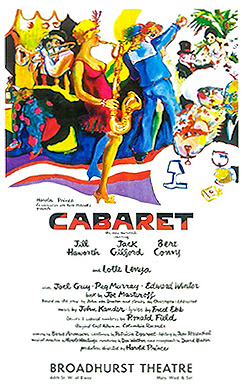
Cabaret is an American musical with music by John Kander, lyrics by Fred Ebb, and a book by Joe Masteroff. It is based on the 1951 play I Am a Camera by John Van Druten, which in turn was based on the 1939 novel Goodbye to Berlin by Christopher Isherwood.
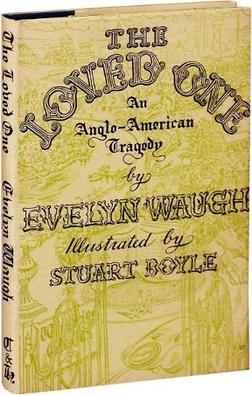
The Loved One: An Anglo-American Tragedy (1948) is a short satirical novel by British novelist Evelyn Waugh about the funeral business in Los Angeles, the British expatriate community in Hollywood, and the film industry.

"Notes on 'Camp'" is a 1964 essay by Susan Sontag that brought the aesthetic sensibility known as "camp" to mainstream consciousness.
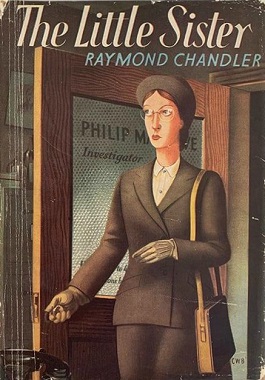
The Little Sister is a 1949 novel by Raymond Chandler, his fifth featuring the private investigator Philip Marlowe. The story is set in Los Angeles in the late 1940s and follows Marlowe's investigation of a missing persons case and blackmail scheme centered around a Hollywood starlet. With several scenes involving the film industry, the novel was partly inspired by Chandler's experience working as a screenwriter in Hollywood and his low opinion of the industry and most of the people in it. The book was first published in the UK in June 1949 and was released in the United States three months later.

Goodbye to Berlin is a 1939 novel by Anglo-American writer Christopher Isherwood set during the waning days of the Weimar Republic. The novel recounts Isherwood's 1929–1932 sojourn as a pleasure-seeking British expatriate on the eve of Adolf Hitler's ascension as Chancellor of Germany and consists of a "series of sketches of disintegrating Berlin, its slums and nightclubs and comfortable villas, its odd maladapted types and its complacent burghers." The plot was based on factual events in Isherwood's life, and the novel's characters were based upon actual persons. The insouciant flapper Sally Bowles was based on teenage cabaret singer Jean Ross who became Isherwood's friend during his sojourn.

The Berlin Stories is a 1945 omnibus by Anglo-American writer Christopher Isherwood and consisting of the novels Mr Norris Changes Trains (1935) and Goodbye to Berlin (1939). The two novels are set in Jazz Age Berlin between 1930 and 1933 on the cusp of Adolf Hitler's ascent to power. Berlin is portrayed by Isherwood during this chaotic interwar period as a carnival of debauchery and despair inhabited by desperate people who are unaware of the national catastrophe that awaits them.
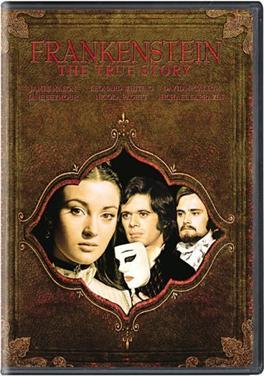
Frankenstein: The True Story is a 1973 British made-for-television film loosely based on the 1818 novel Frankenstein; or, The Modern Prometheus by Mary Shelley. It was directed by Jack Smight, and the screenplay was written by novelist Christopher Isherwood and his longtime partner Don Bachardy.

Prater Violet (1945) is Christopher Isherwood's fictional first person account of film-making. The Prater is a large park and amusement park in Vienna, a city important to characters in the novel for several reasons. Though Isherwood broke onto the literary scene as a novelist, he eventually worked in Hollywood as a screenwriter. In this novel, Isherwood comments on life, art, commercialization of art and Nazism.
Francis Adrian Joseph Turville-Petre was a British archaeologist, famous for the discovery of the Homo heidelbergensis fossil Galilee Man in 1926, and for his work at Mount Carmel, in what was then the British Mandate of Palestine, now Israel. He was a close friend of Christopher Isherwood and W. H. Auden.
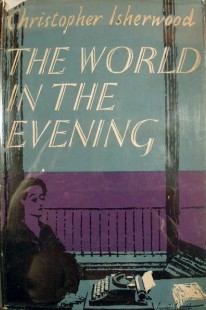
The World in the Evening by Christopher Isherwood is a quasi-fictional account of love, loss, and regret. As in many Isherwood novels, the main character is caught in a contest between his personal egoism and the needs of friends and lovers.
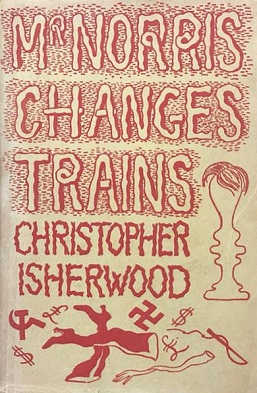
Mr Norris Changes Trains is a 1935 novel by the British writer Christopher Isherwood. It is frequently included with Goodbye to Berlin, another Isherwood novel, in a single volume, The Berlin Stories. Inspiration for the novel was drawn from Isherwood's experiences as an expatriate living in Berlin during the early 1930s, and the character of Mr Norris is based on Gerald Hamilton. In 1985 the actor David March won a Radio Academy Award for Best Radio Actor for his performance in a dramatisation of the novel for BBC Radio 4.

Denham "Denny" Fouts was an American male prostitute and socialite. He served as the inspiration for characters by Truman Capote, Gore Vidal, Christopher Isherwood, and Gavin Lambert. He was allegedly a lover of Prince Paul of Greece and French actor Jean Marais.

The Salt Roads is a novel by Canadian-Jamaican writer Nalo Hopkinson, published in 2003. It has been categorized as historical fiction, speculative fiction, science fiction, and magical realism.

Fielding Gray is Volume IV of the novel sequence Alms for Oblivion by Simon Raven, published in 1967. It was the fourth novel to be published in The Alms for Oblivion sequence though it is the first novel chronologically. The story takes place during the period right after World War II, from May to September 1945 Fielding Gray is also the name of a character who features in this and six of the other nine volumes of the Alms for Oblivion series.

The Temple is a semi-autobiographical novel written by Stephen Spender, sometimes labelled a bildungsroman because of its explorations of youth and first love. It was written after Spender spent his summer holiday in Germany in 1929 and recounts his experiences there. It was not completed until the early 1930s. Due to its frank depictions of homosexuality, The Temple was not published in Britain until 1988, twenty-one years after the decriminalisation of homosexuality.

Sally Bowles is a fictional character created by English-American novelist Christopher Isherwood and based upon 19-year-old cabaret singer Jean Ross. The character debuted in Isherwood's 1937 novella Sally Bowles published by Hogarth Press, and commentators have described the novella as "one of Isherwood's most accomplished pieces of writing." The work was republished in the 1939 novel Goodbye to Berlin and in the 1945 anthology The Berlin Stories.
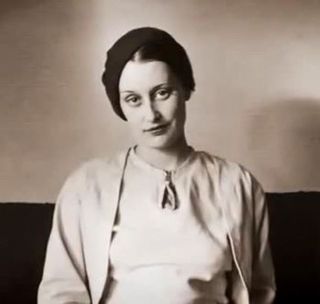
Jean Iris Ross Cockburn was a British journalist, political activist, and film critic. During the Spanish Civil War (1936–39), she was a war correspondent for the Daily Express and is alleged to have been a press agent for Joseph Stalin's Comintern. A skilled writer, Ross worked as a film critic for the Daily Worker. Throughout her life, she wrote political criticism, anti-fascist polemics, and socialist manifestos for a number of disparate organisations such as the British Workers' Film and Photo League. She was a devout Stalinist and a lifelong member of the Communist Party of Great Britain.

















